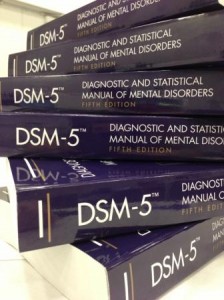June 16, 2013
Yottabytes, wormcams and whistleblowers
 If you haven’t yet heard about the details of the NSA’s spying program, catch yourself up with the timeline so this post doesn’t sound entirely bonkers.
If you haven’t yet heard about the details of the NSA’s spying program, catch yourself up with the timeline so this post doesn’t sound entirely bonkers.
For years I’ve been pondering the scope and implications of what Aram Sinnreich and I call The End of Forgetting, and even prior to Edward Snowden’s revelations, I have recently noticed a few dramatic activations of massive distributed memory banks.
In recent months, there have been a few instances where we have literally peered back in time, reconstructing the past based on comprehensive (relevant) records. In the sciences, the collection of records prior to having a specific question is sometimes called “triple-blind“. And, as we know, the dragnet-style collection of records has extended far beyond the lab. If software does one thing well its the collection/storage/retrieval of records; And, software is everywhere.
This story about the reconstruction of February’s meteor path based on dashboard-cam footage reassembled inside Google Earth was pretty stunning:
Also, was it me, or did the reconstruction of the crowd scenes leading up to the Boston bombings feel a bit like the the distorted phone messages from the past that the Scientists reconstructed in 12 Monkeys???
Mainstream physicists have postulated a viable form of 2-way time travel based on wormholes. In this scenario, one end of a wormhole is accelerated into the future, allowing those in the future to travel back to the point where the wormhole was opened, but crucially, no farther back in the past. The point when this wormhole is created is known as Year Zero.
In the past, I have discussed physically travelling through time (Pyramid Schemes), including how critical detailed records of your destination is to plotting flippin’ pinpoint coordinates. But in this post I’m content to explore the metaphor of the Wormcam, a science-fiction device I first saw used in Arthur C. Clarke’s Light of Other Days. The wormcam is a wormhole that only allows light to travel through it. In this book, wormholes are first able to bridge any two points in space, and soon thereafter, any two points in time. Most people learn to correctly assume that they have at least one wormcam fixed on them all the time.
I’m not really big on sharp discontinuities in history, and I’m not particularly fixated on determining when precisely Year Zero fell/will fall. But, its increasingly clear to me that The End of Forgetting signifies the singularity, more-so than AI, Mo-Bio, and Nano-Tech combined. There won’t be a single moment when prior and after people won’t understand each other, but the period we are living through right now has those characteristics. And PRISM is just the start.
If you haven’t heard of the British series Black Mirror, stop reading this post right now and go watch S01E03 The Entire History of You. Really, that episode alone should lay to rest the question of why someone who doesn’t break the law should care about the End of Forgetting.
Of course, the precipice we are standing on does not only provide us with a view of the past. While the past doesn’t determine the future, power is determined to wield the past as a means of stacking the odds.
The media is currently preoccupied with data mining, and forensic analysis. But, the real money is about about turning the wormcams to the future, using predictive behavioral modeling. The NSA only needs to be 100% correct to stop terrorists, but corporations only need to be a few percentage points better to sell more burgers or prevent your friends from changing mobile carriers, and politicians often only need a few more points to win an election or gerrymander a district. A friend of mine at TC published a paper about predicting who will drop out of high school dropouts by third-grade, based primarily on their grades and absentee records. And, that’s before we turn to pre-crime or pathologizing risk.
In Snowden’s own words, “they can use this system to go back in time and scrutinize every decision you’ve ever made, every friend you’ve ever discussed something with.” (7:33)
Just remember, if all that exists is the present, then the past must be as malleable as the future. That is, unless we digitally ossify them 🙂
 Filed by Jonah at 10:45 pm under air,endofforgetting,metaphysics
Filed by Jonah at 10:45 pm under air,endofforgetting,metaphysics
No Comments


 3 Comments
3 Comments